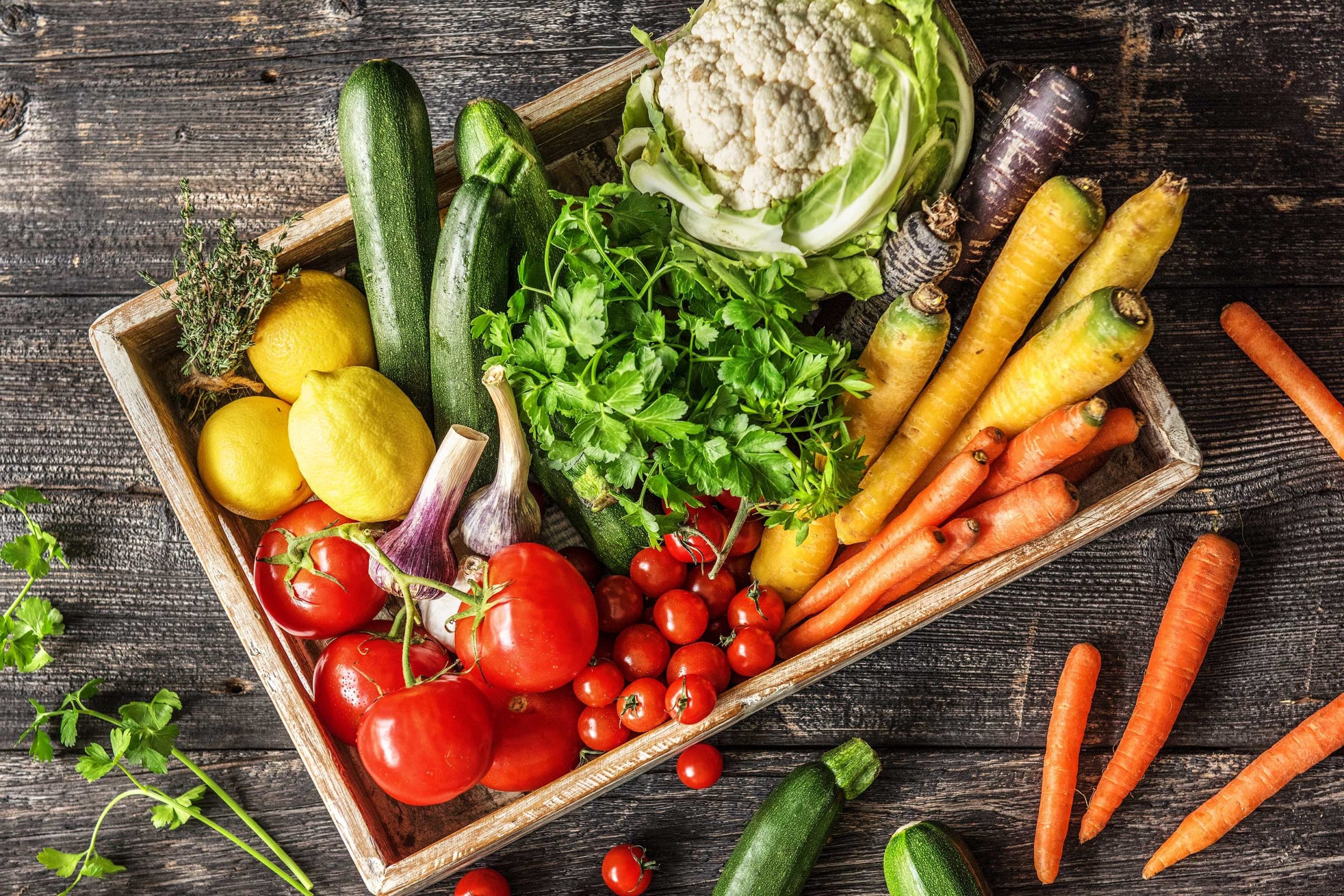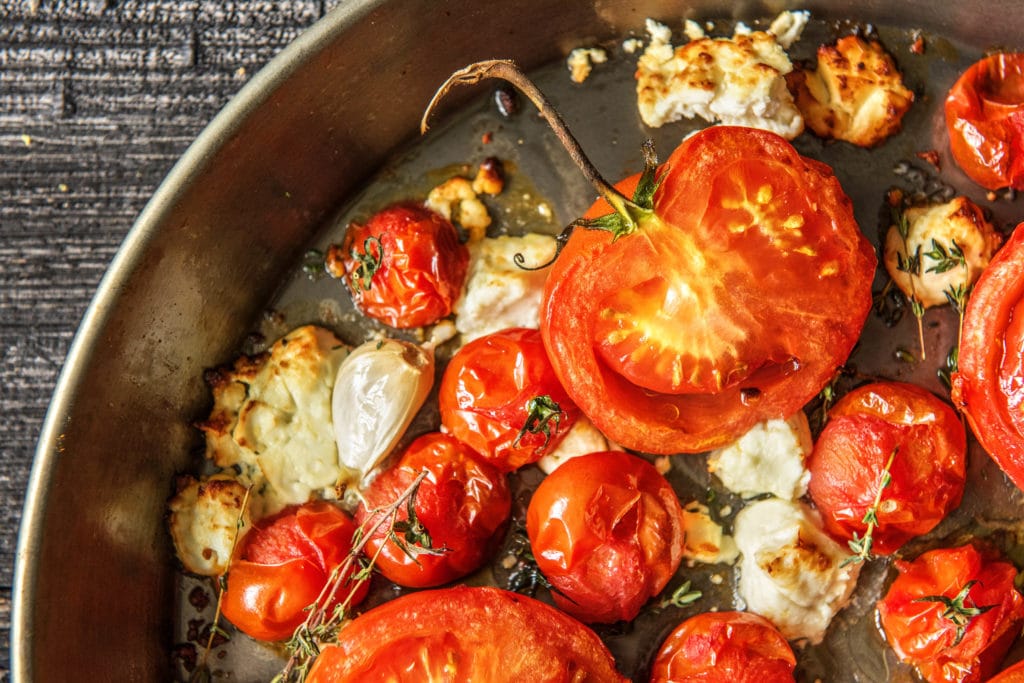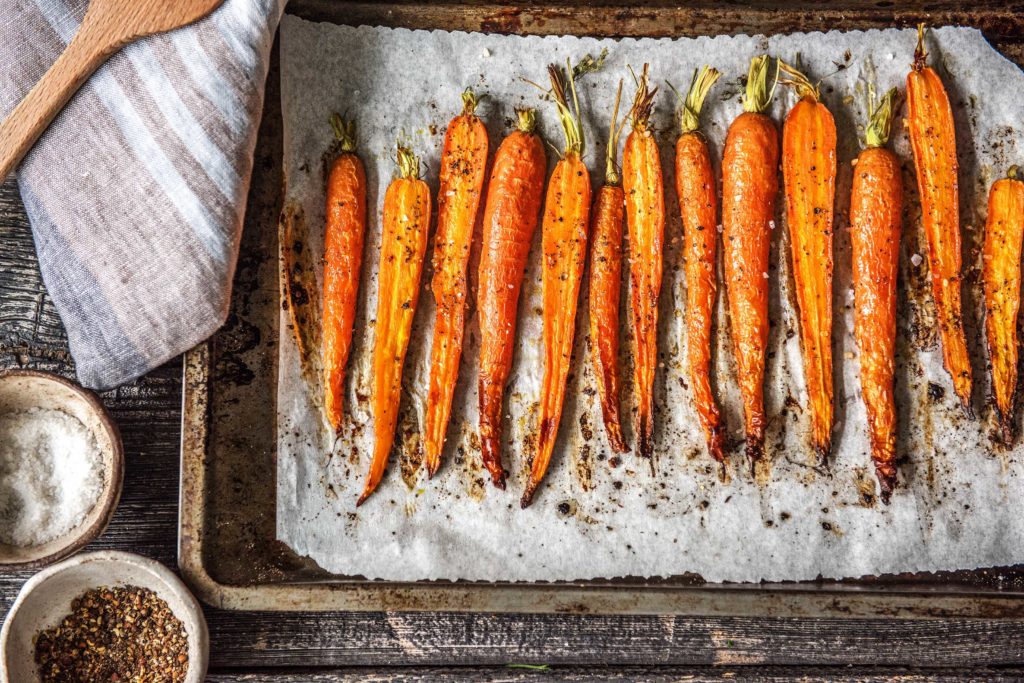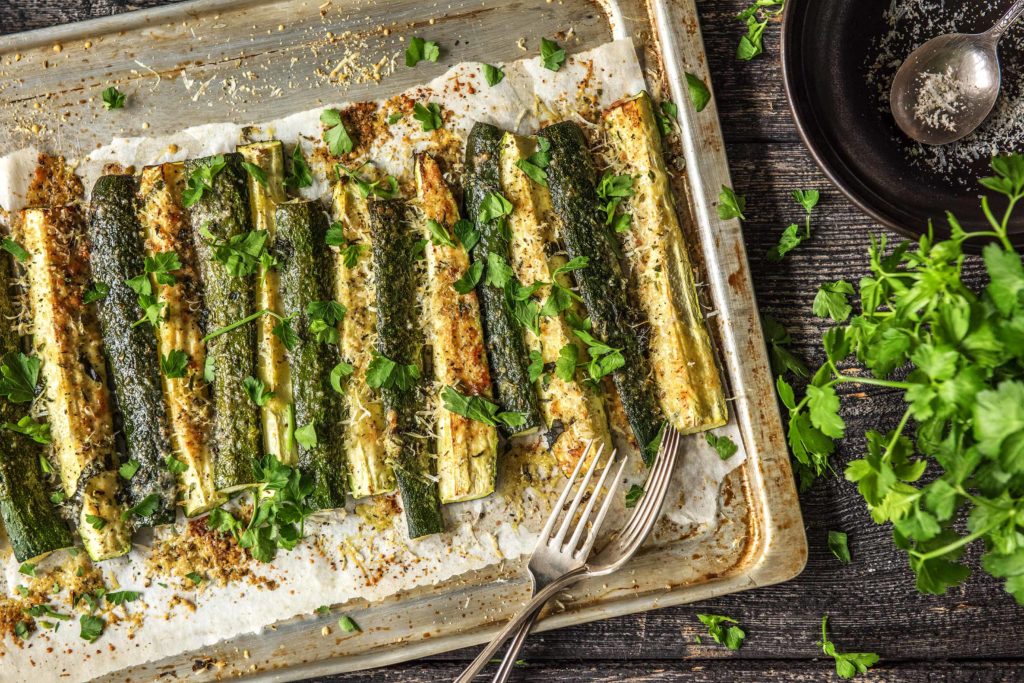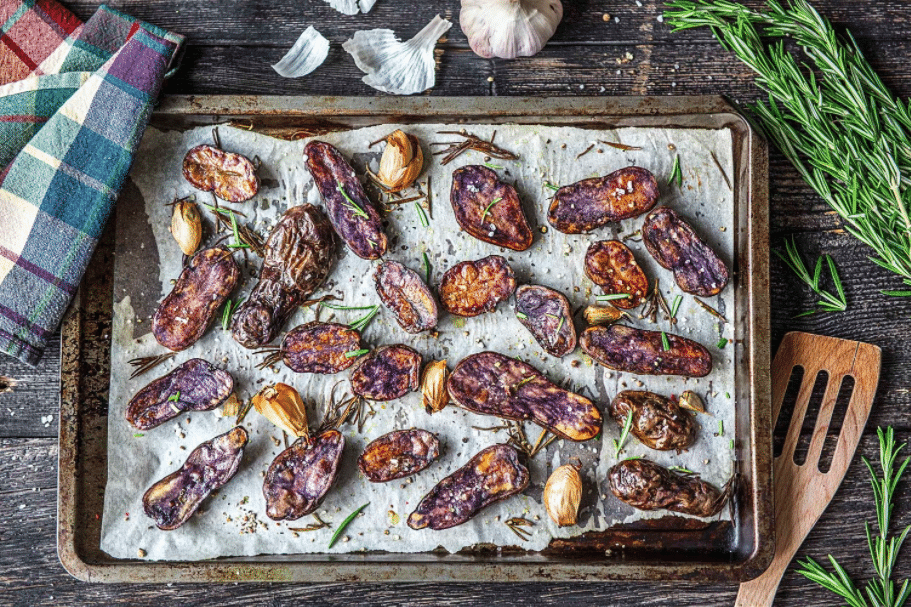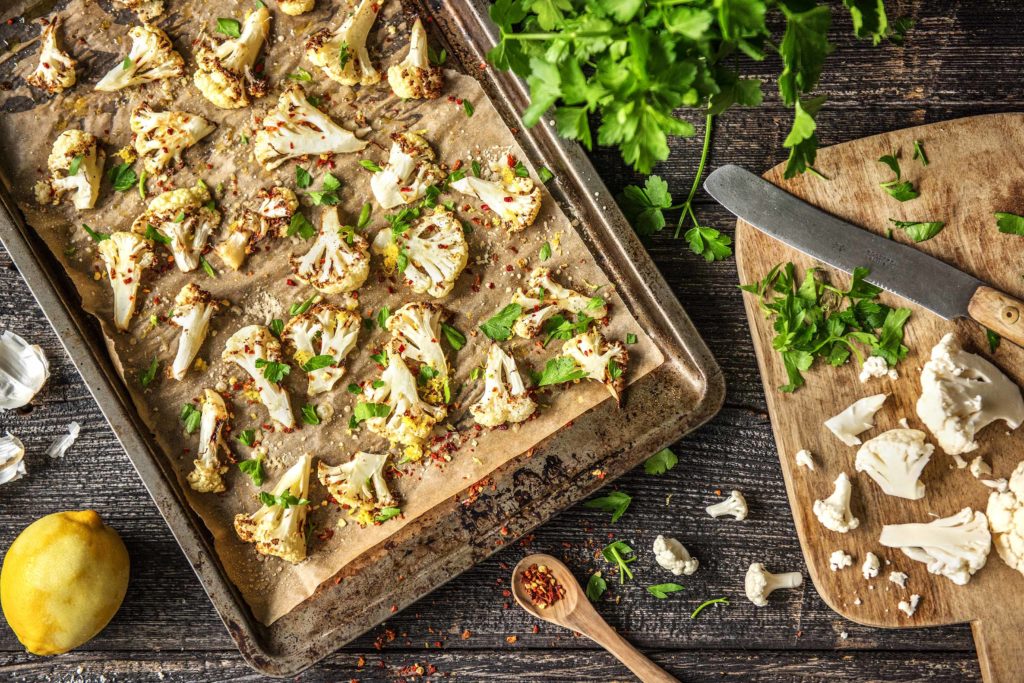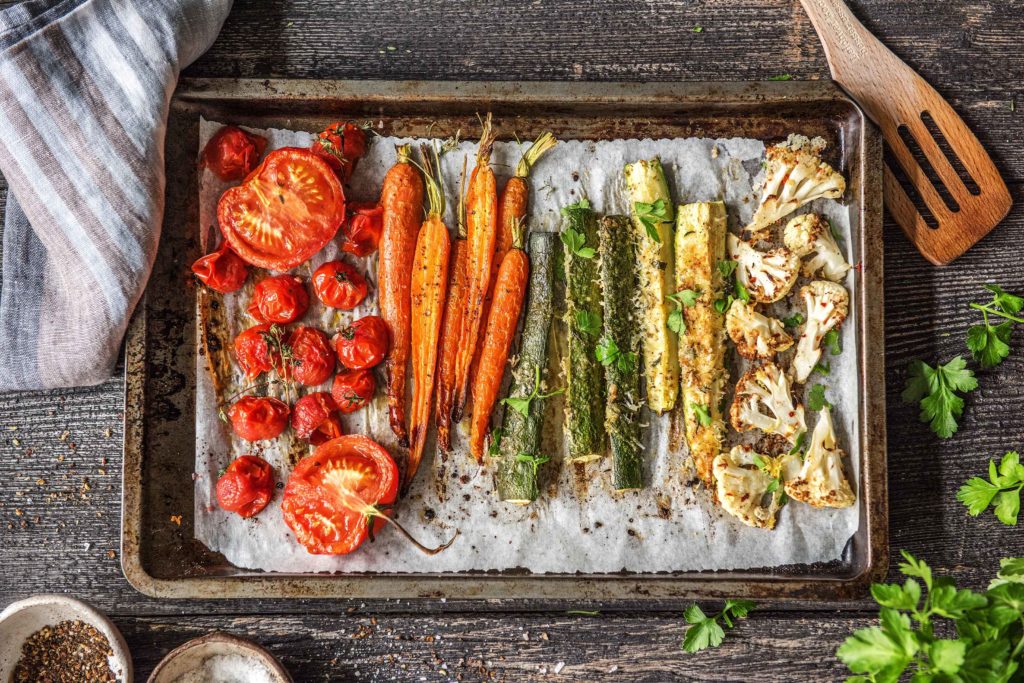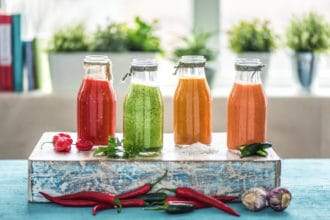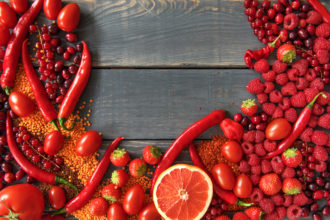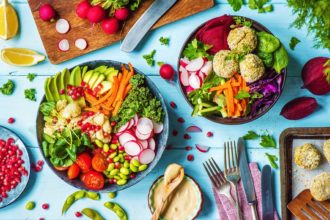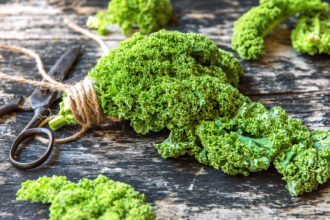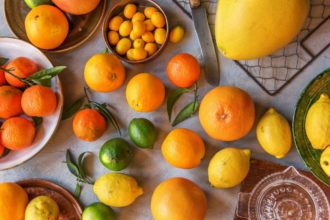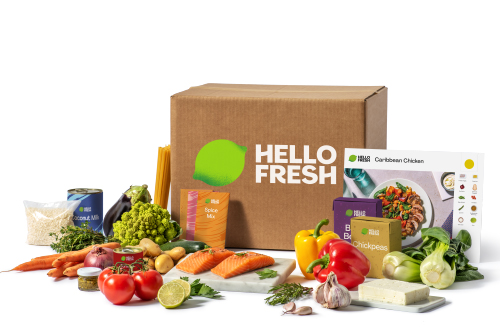Why Colorful Food Makes You Happy (and lets you taste with your eyes) May 3, 2017
On today’s edition of 100 Days of Happy Cooks, we’re talking about the scientific relationship between colorful food, mood, and flavor. Our brains have evolved to associate the flavors of sweet, salty, sour, and bitter with color – which allows us to taste with our eyes.
Our brains respond to light energy, aka color, by stimulating the pituitary and pineal glands. These endocrine glands regulate hormones like serotonin, which is responsible for making us feel happy. Research has shown that different colors also affect blood pressure, pulse, and respiration rates as well as brain activity and sleep/wake cycles. These color triggers set the mood for us to feel more energetic, happy, and relaxed and are strong enough to even have an effect on people who are blind!
We are also influenced by the visual cue of color when it comes to our perception of how something will taste. Colorful food can influence our brain to create an expectation that specific colors will taste a certain way. For example, the more vibrantly colored a food is, the more intense we expect its flavor to be.
Can you guess what your favorite color tastes like?
For Stimulating Energy, Think Red = Sweet
Red is a stimulating color most often used to excite, entice, or draw attention to something. We immediately notice when the traffic light has changed or when homework is marked up with a red pen. We even put on red lipstick to stand out. Foods that are red are also found to stimulate appetite. Research has found that when eating a red food item, we believe that it will taste sweet. Historically, the association between the color red and food comes from the experience of tasting sweetness in fruits, which tend to turn red when they are fully ripe.
Nutrition Bonus: Both flavonoids (anthocyanins) and carotenoids (lycopene) are what give red-hued produce their color. These antioxidants help to protect and defend the body against daily damage from free radicals to slow the aging process and help prevent disease.
Red Inspiration: Tomatoes, watermelon, cherries, strawberries, raspberries, apples, red peppers
For Happiness, Think Orange/Yellow = Mildly Sweet
Orange and yellow are the feel-good colors of the rainbow eliciting feelings of happiness, optimism, and hope. They are most often associated with sunny days and blooming flowers. Research has shown that both of these colors are perceived as being in foods that will taste mildly sweet. This may be why these colored veggies often make their way into semi-sweet desserts (think carrot cake, sweet potato pie, or cornbread).
Nutrition Bonus: Beta-carotene is what produces an orange hue, and zeaxanthin is what produces a yellow hue. These antioxidants, in combination with all the vitamin A and C found in orange and yellow produce, help keep our eyes strong, immune system healthy, and skin radiant.
Orange/Yellow Inspiration: Butternut squash, oranges, carrots, mangoes, papaya, sweet potato, cantaloupe, pineapple, corn, lemons
For Wholesome Energy, Think Green = Tart or Sour
Green is a color that people associate with nature and health; it brings forth feelings of positive anticipation, freshness, growth, and calming energy. When asked to evaluate how healthy a meal is, many will look for how much of this emerald color hue is included. Research has found that when eating a green food item, we believe that it will taste sour or tart. Historically, this association comes from the experience of tasting tartness in underripe produce. In fact, we often refer to not-quite-ripe foods as being “green.”
Nutrition Bonus: Carotenoids like lutein and phytochemicals like flavonols are what give fruits and veggies their rich shade of green. These compounds positively affect the whole body from brain and heart health to eye and skin health.
Green Inspiration: Collard greens, kale, Brussels sprouts, spinach, lettuces, broccoli, green bell peppers, peas, herbs, limes
For Relaxation, Think Blue/Purple = Bitter
Blue is a calming color used to relax and soothe. While this hue can be found in the sky and the water, it’s hard to come up with the names of more than a handful of blue/purple foods. For this reason, blue food is often perceived as being unnatural, or artificial, and tends to decrease appetite. Research shows that when it comes to the darkest shades of blue and purple foods (that lean towards blackness), we expect them to taste bitter. This flavor association may be built around our experiences with dark colored foods such as coffee, pure cacao, and dried vanilla pods — which are indeed bitter.
Nutrition Bonus: Anthocyanins are what give produce the vivid blue and purple colors. These antioxidants support healthy aging and heart health.
Blue/Purple Inspiration: Blueberries, blackberries, eggplant, plums, purple cabbage, purple potatoes
For Calmness, Think White = Salty
White is a color that is often associated with peacefulness, simplicity, and cleanliness. It represents a blank slate or background upon which you add something. In fact, restaurants serve their meals on white plates so the colorful food itself shines. In general, white doesn’t seem to greatly stimulate the senses. Research has found that when eating a white food item, it is most often associated with tasting salty. This flavor association may be built around our experiences with white foods like popcorn, chips, and bread — which have a reputation of being processed and high in sodium.
Nutrition Bonus: White veggies get their pale complexion because they are typically not exposed to sunlight and often grow under the ground. Even though some people believe they should avoid white foods, many white veggies are a good source of potassium and magnesium. Garlic and onions contain a phytochemical called allicin that helps lower cholesterol and blood pressure while stimulating the immune system.
White Inspiration: Cauliflower, jicama, onions, garlic, ginger, turnips, parsnips, mushrooms
Eating the Rainbow
Tasting is a full sensory experience that begins in the brain when we see colorful food. Both food scientists and chefs will agree that to fully appreciate what you eat, the sight of your food is just as important as taste. Even dietitians like myself will tell you that vibrantly colored fruits and vegetables aren’t just visually appealing; they are also indicators of abundant protective nutrients that offer a rainbow of healthy benefits.
If you’re feeling inspired to add some color to your next meal, check out these colorful hummus recipes, pesto ideas, and even these beautiful thirst-quenching infused waters.


